Volume 7 | Number 1 | May 2015
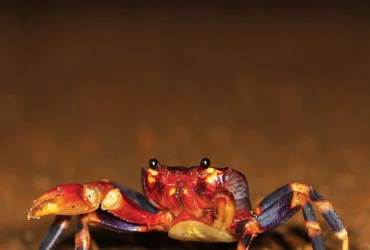 v7i1.156
v7i1.156ISSN: 1800-427X (print)
eISSN: 1800-427X (online)
DOI:10.47605/tapro.v7i1.156
Submitted date: 14 May 2014
Accepted date: 20 July 2014
Published date: 19 January 2015
Pp. 45–46.
Velella velella (Hydrozoa) on the coast of Pakistan along the northern Arabian Sea
S. Gul
*Corresponding author. E-mail: gulshahnawaz@yahoo.com
Taxonomic information on Hydrozoa from waters of Pakistan is limited to relatively few studies. None of them reported the pleustonic species Velella velella (Linnaeus, 1758). Daniel (1976) reviewed the worldwide distribution of the two dimorphic forms of V. Velella (with the sail oriented either Northwest or Southeast), but no occurrences of the species were recorded in the northern Arabian Sea. The aim of this report is to record this hydrozoan found on the coast of Pakistan, as knowledge of its occurrence in the region is lacking in the scientific literature.
Section Editor: Dale R. Calder
eISSN: 1800-427X (online)
DOI:10.47605/tapro.v7i1.156
Submitted date: 14 May 2014
Accepted date: 20 July 2014
Published date: 19 January 2015
Pp. 45–46.
Velella velella (Hydrozoa) on the coast of Pakistan along the northern Arabian Sea
S. Gul
*Corresponding author. E-mail: gulshahnawaz@yahoo.com
Taxonomic information on Hydrozoa from waters of Pakistan is limited to relatively few studies. None of them reported the pleustonic species Velella velella (Linnaeus, 1758). Daniel (1976) reviewed the worldwide distribution of the two dimorphic forms of V. Velella (with the sail oriented either Northwest or Southeast), but no occurrences of the species were recorded in the northern Arabian Sea. The aim of this report is to record this hydrozoan found on the coast of Pakistan, as knowledge of its occurrence in the region is lacking in the scientific literature.
Section Editor: Dale R. Calder
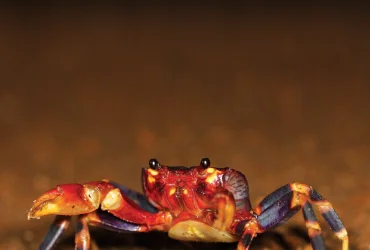 v7i1.155
v7i1.155ISSN: 1800-427X (print)
eISSN: 1800-427X (online)
DOI:10.47605/tapro.v7i1.155
Submitted date: 29 August 2014
Accepted date: 10 October 2014
Published date: 19 January 2015
Pp. 43–44.
Rediscovery of two Darts (Lepidoptera) in Sri Lanka after 90 years
T.M.T.S. Priyadarshana*, C. de Alwis & G.V.I.H. Wijewardana
*Corresponding author. E-mail: tharakas.priyadarshana@gmail.com
A total of 245 butterfly species (Order Lepidoptera: Papilionoidea) have been recorded from Sri Lanka. Although a listing of 245 species is substantial not all species are common, some may be widespread and uncommon. In particular, Potanthus [Hesperiidae] is widespread geographically with three species occurring in Sri Lanka: P. pallida, P. confucius and P. pseudomaesa. According to a recent publications, P. pallida and P. pseudomaesa are rare in Sri Lanka.
Section Editor: Jeffrey Miller
eISSN: 1800-427X (online)
DOI:10.47605/tapro.v7i1.155
Submitted date: 29 August 2014
Accepted date: 10 October 2014
Published date: 19 January 2015
Pp. 43–44.
Rediscovery of two Darts (Lepidoptera) in Sri Lanka after 90 years
T.M.T.S. Priyadarshana*, C. de Alwis & G.V.I.H. Wijewardana
*Corresponding author. E-mail: tharakas.priyadarshana@gmail.com
A total of 245 butterfly species (Order Lepidoptera: Papilionoidea) have been recorded from Sri Lanka. Although a listing of 245 species is substantial not all species are common, some may be widespread and uncommon. In particular, Potanthus [Hesperiidae] is widespread geographically with three species occurring in Sri Lanka: P. pallida, P. confucius and P. pseudomaesa. According to a recent publications, P. pallida and P. pseudomaesa are rare in Sri Lanka.
Section Editor: Jeffrey Miller
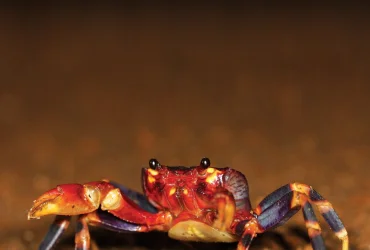 v7i1.154
v7i1.154ISSN: 1800-427X (print)
eISSN: 1800-427X (online)
DOI:10.47605/tapro.v7i1.154
Submitted date: 20 September 2014
Accepted date: 1 December 2014
Published date: 19 January 2015
Pp. 40–42.
On two rare cerambycid beetles (Coleoptera) from India
E. Vives & H. V. Ghate*
*Corresponding author. E-mail: hemantghate@gmail.com
Two unique cerambycid beetle species, which were collected from Kerala in 1997, were recently identified as Anoeme andrewesi Gahan, 1906 (Prioninae, Meroscelisini) and Zoodes maculatus (White, 1855), (Cerambycinae, Hesperophanini). Of the two species, Z. maculatus was previously only known from Sri Lanka; therefore, this is a new locality record and addition to the Indian faunal list of Cerambycidae. Types of both species are preserved in the Natural History Museum, London, UK (BMNH). Brief descriptions and color photographs of these two species are presented here. Both specimens were collected approximately 6 km North of Munnar, Kerala, India, on 14 April 1997, by a local collector. These are now preserved in E. Vives’s private collection, Barcelona, Spain.
Section Editor: Alain Drumont
eISSN: 1800-427X (online)
DOI:10.47605/tapro.v7i1.154
Submitted date: 20 September 2014
Accepted date: 1 December 2014
Published date: 19 January 2015
Pp. 40–42.
On two rare cerambycid beetles (Coleoptera) from India
E. Vives & H. V. Ghate*
*Corresponding author. E-mail: hemantghate@gmail.com
Two unique cerambycid beetle species, which were collected from Kerala in 1997, were recently identified as Anoeme andrewesi Gahan, 1906 (Prioninae, Meroscelisini) and Zoodes maculatus (White, 1855), (Cerambycinae, Hesperophanini). Of the two species, Z. maculatus was previously only known from Sri Lanka; therefore, this is a new locality record and addition to the Indian faunal list of Cerambycidae. Types of both species are preserved in the Natural History Museum, London, UK (BMNH). Brief descriptions and color photographs of these two species are presented here. Both specimens were collected approximately 6 km North of Munnar, Kerala, India, on 14 April 1997, by a local collector. These are now preserved in E. Vives’s private collection, Barcelona, Spain.
Section Editor: Alain Drumont
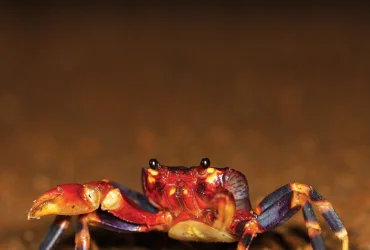 v7i1.153
v7i1.153ISSN: 1800-427X (print)
eISSN: 1800-427X (online)
DOI:10.47605/tapro.v7i1.153
Submitted date: 13 March 2014
Accepted date: 18 May 2014
Published date: 19 January 2015
Pp. 38–39.
Range extension of Perbrinckia scansor (Crustacea) in Sri Lanka
D.E. Gabadage, U.S.C. Udagedara & D.M.S.S. Karunarathna
*Corresponding author. E-mail: degabadage@gmail.com
Perbrinckia scansor (Ng, 1995) is the only known tree-climbing freshwater crab among the 52 freshwater crab species of Sri Lanka. According to published literature, this endemic species was recorded in eleven localities (elevation range 150–960m a.s.l) in the Kalu, Walawe and Gin River basins and assessed as “Least Concern”, but again this species was categorised as Endangered. This species is a habitat specialist with adults living in rainwater-filled phytotelms from about ground level up to 1 m above ground. We recorded the distribution of P. scansor from 47 localities through opportunistic observations within the period 2005–2010.
Section Editor: M.M. Bahir
eISSN: 1800-427X (online)
DOI:10.47605/tapro.v7i1.153
Submitted date: 13 March 2014
Accepted date: 18 May 2014
Published date: 19 January 2015
Pp. 38–39.
Range extension of Perbrinckia scansor (Crustacea) in Sri Lanka
D.E. Gabadage, U.S.C. Udagedara & D.M.S.S. Karunarathna
*Corresponding author. E-mail: degabadage@gmail.com
Perbrinckia scansor (Ng, 1995) is the only known tree-climbing freshwater crab among the 52 freshwater crab species of Sri Lanka. According to published literature, this endemic species was recorded in eleven localities (elevation range 150–960m a.s.l) in the Kalu, Walawe and Gin River basins and assessed as “Least Concern”, but again this species was categorised as Endangered. This species is a habitat specialist with adults living in rainwater-filled phytotelms from about ground level up to 1 m above ground. We recorded the distribution of P. scansor from 47 localities through opportunistic observations within the period 2005–2010.
Section Editor: M.M. Bahir
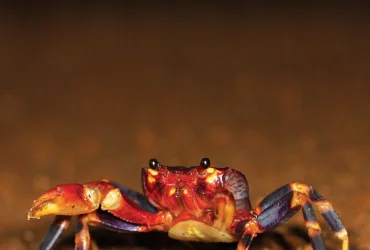 v7i1.152
v7i1.152ISSN: 1800-427X (print)
eISSN: 1800-427X (online)
DOI:10.47605/tapro.v7i1.152
Submitted date: 12 May 2014
Accepted date: 30 November 2014
Published date: 19 January 2015
Pp. 29–37, Pl. 15–17.
EFFECTS OF ENVIRONMENTAL ENRICHMENT ON THE SOCIAL BEHAVIOR OF JAVAN SLOW LORIS, Nycticebus javanicus
Prescillia Rindang Putri, Richard S. Moore, Noviar Andayani, Karmele L. Sanchez
*Corresponding author. E-mail: rindangputri@yahoo.com
Abstract
We conducted a behavioural study on rescued captive N. javanicus housed at International Animal Rescue Centre, West Java, focussing on the frequency of social interactions in relation to varying amounts of enrichment provided. Three different sized cages were chosen comprising a total of ten slow lorises in groups of five, three and two individuals respectively. After providing extra enrichment, we observed a general increase in all social behaviours in both cages, except for proximity and attack. A significant increase in positive social interactions (clasp interaction) was observed when all data combine after environmental enrichment was given. We made sociograms to visualize the significant results of before and after enrichments. The clasp sociogram before enrichments phase revealed that the only male in both cages acted as the initiator of clasp behaviour to other female actors in the cage. This short study reveals positive signs in increasing certain desired behaviours and the role of individuals within the cage during enrichment.
Key words : captive, critically endangered, ex-situ conservation, primates, reintroduction, sociogram
Section Editor: Colin P. Groves
eISSN: 1800-427X (online)
DOI:10.47605/tapro.v7i1.152
Submitted date: 12 May 2014
Accepted date: 30 November 2014
Published date: 19 January 2015
Pp. 29–37, Pl. 15–17.
EFFECTS OF ENVIRONMENTAL ENRICHMENT ON THE SOCIAL BEHAVIOR OF JAVAN SLOW LORIS, Nycticebus javanicus
Prescillia Rindang Putri, Richard S. Moore, Noviar Andayani, Karmele L. Sanchez
*Corresponding author. E-mail: rindangputri@yahoo.com
Abstract
We conducted a behavioural study on rescued captive N. javanicus housed at International Animal Rescue Centre, West Java, focussing on the frequency of social interactions in relation to varying amounts of enrichment provided. Three different sized cages were chosen comprising a total of ten slow lorises in groups of five, three and two individuals respectively. After providing extra enrichment, we observed a general increase in all social behaviours in both cages, except for proximity and attack. A significant increase in positive social interactions (clasp interaction) was observed when all data combine after environmental enrichment was given. We made sociograms to visualize the significant results of before and after enrichments. The clasp sociogram before enrichments phase revealed that the only male in both cages acted as the initiator of clasp behaviour to other female actors in the cage. This short study reveals positive signs in increasing certain desired behaviours and the role of individuals within the cage during enrichment.
Key words : captive, critically endangered, ex-situ conservation, primates, reintroduction, sociogram
Section Editor: Colin P. Groves
Hubungi Kami
The ultimate aim of the journal is to provide an effective medium for communication of the latest and best scientific information.
Copyright © 2020 Taprobanica. All Rights Reserved
Jasa Pembuatan Website by IKT




